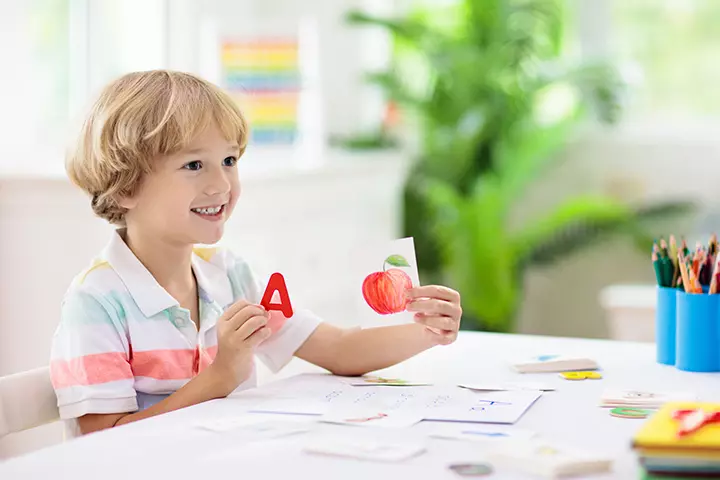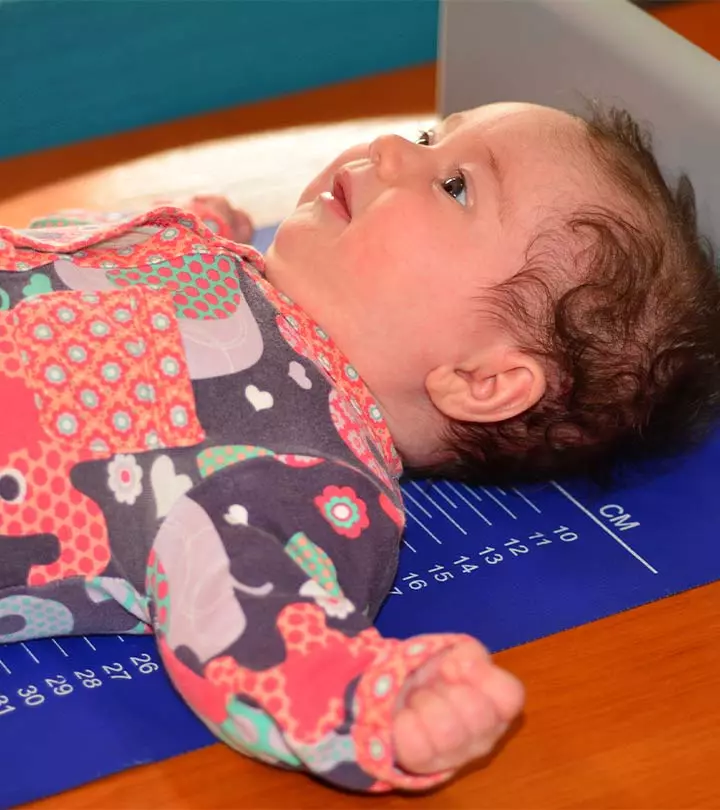

Image: Shutterstock
As a new parent, you’re always seeking ways to enhance communication and strengthen your bond with your baby. Have you considered teaching them sign language? In this article, we’ll explore the benefits, the ideal age to start, practical tips, and how it can enrich your parenting experience. Let’s embark on this exciting journey of communication together! Read on!

Understanding Baby Sign Language
Image: Shutterstock
Baby sign language is a method that uses specific gestures or signs to help babies communicate their needs, wants, and thoughts before they are able to speak verbally. It’s based on the understanding that babies have the cognitive and motor skills to comprehend and imitate simple hand movements long before they can form words. By teaching your baby sign language, you can empower them to express themselves, reduce frustration, and strengthen the parent-child bond through meaningful interactions.
The Benefits Of Baby Sign Language
Image: Shutterstock
The advantages of teaching your baby sign language are numerous and extend well beyond communication. Here are some key benefits of teaching these sign languages to your kids:
1. Enhanced Communication
Baby sign language provides a bridge between your baby’s thoughts and their ability to express them. It allows them to communicate their needs, desires, and experiences, fostering a deeper understanding between you and your little one.
2. Reduced Frustration
By giving your baby the tools to communicate, you can minimize frustration and tantrums caused by their inability to convey their needs effectively. This can lead to a happier and more harmonious parent-child relationship.
3. Boosted Cognitive Development
Learning sign language engages your baby’s brain, enhancing their cognitive development and improving their ability to grasp language concepts. It stimulates memory, problem-solving skills, and overall cognitive abilities.
4 Early Language Skills
Introducing sign language at an early age can have a positive impact on your baby’s language development. It can potentially lead to earlier spoken language acquisition and a broader vocabulary (1).
5. Strengthened Parent-Child Bond
The process of teaching sign language involves focused interaction and bonding between you and your baby. This shared experience strengthens your connection and fosters a sense of trust and closeness.
When To Start Teaching Baby Sign Language
Image: Shutterstock
The ideal age to start teaching your baby sign language is typically around six to eight months, as this is when they start developing the motor skills required to imitate hand movements (2). However, you can introduce basic signs as early as three to four months, even if your baby may not be able to produce the signs immediately. Remember, every baby is unique, so follow their cues and readiness. The earlier you start, the more time you have to establish a solid foundation for communication.
Getting Started With Baby Sign Language
Image: Shutterstock
Now that you’re familiar with the benefits and the appropriate age to begin, let’s explore practical tips to help you get started:
1. Start With Basic Signs
Begin with simple, everyday signs that are relevant to your baby’s routine, such as “milk”, “more”, “eat,” or “sleep.” Repeat the signs consistently while using spoken words to reinforce their meaning.
2. Be Consistent
Consistency is key when teaching sign language to your baby. Use the signs consistently in relevant situations and encourage your baby to imitate them. Consistency helps your baby understand the connection between the sign and its meaning.
3. Make It Fun
Image: Shutterstock
Incorporate sign language into playtime and daily activities. Sing songs with accompanying signs, read books with interactive signs, and use signs during mealtime or bath time. Creating a fun and engaging learning environment will make the process enjoyable for both you and your baby.
4. Seek Resources And Support
There are numerous resources available to support your journey in teaching baby sign language. Look for books, videos, and online tutorials that demonstrate signs and provide guidance. Additionally, consider joining parent groups or classes where you can connect with other parents teaching sign language to their babies.
5. Patience And Encouragement
Remember that learning sign language is a gradual process for your baby. Be patient and encourage their efforts. Celebrate their milestones and progress, no matter how small. Positive reinforcement and enthusiasm will motivate your baby to continue learning and communicating through signs.
Expanding Beyond Basic Signs
Image: Shutterstock
Once your baby becomes familiar with basic signs, you can gradually introduce more advanced signs and expand their vocabulary. Teach signs for specific objects, actions, emotions, and concepts that align with their interests and experiences. Encourage their curiosity and creativity by responding to their attempts to communicate through signs. Your baby’s signing repertoire will grow, enriching their ability to express themselves effectively.
Teaching your baby sign language is an enriching and empowering experience that can enhance communication, reduce frustration, and deepen the parent-child bond. Starting at the appropriate age, being consistent, and making it a joyful journey are key elements to success. Embrace the wonders of sign language as you embark on this beautiful adventure of connecting with your baby in a whole new way. Enjoy the incredible moments of understanding and shared expressions, building a strong foundation for lifelong communication.
Master Baby Sign Language: Teach Your Baby to Communicate
Watch now to learn essential baby sign language tips. Discover when to start, simple signs to use, and how to reduce frustration for a stronger parent-child bond.
Community Experiences
Join the conversation and become a part of our nurturing community! Share your stories, experiences, and insights to connect with fellow parents.



















